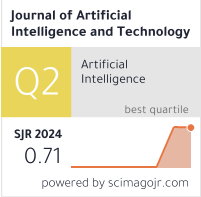Human Ear Image Recognition Method Using PCA and Fisherface Complementary Double Feature Extraction
DOI:
https://doi.org/10.37965/jait.2022.0146Keywords:
PCA, ICA, single feature extraction, double feature extraction, ear recognitionAbstract
Ear recognition is a new kind of biometric identifification technology now. Feature extraction is a key step in pattern recognition technology, which determines the accuracy of classifification results. The method of single feature extraction can achieve high recognition rate under certain conditions, but the use of double feature extraction can overcome the limitation of single feature extraction. In order to improve the accuracy of classifification results, this paper proposes a new method, that is, the method of complementary double feature extraction based on Principal Component Analysis (PCA) and Fisherface, and we apply it to human ear image recognition. The experiment was carried out on the ear image library provided by the University of Science and Technology Beijing. The results show that the ear recognition rate of the proposed method is signifificantly higher than the single feature extraction using PCA, Fisherface, or Independent component analysis (ICA) alone.
Metrics
Published
How to Cite
Issue
Section
License
Copyright (c) 2023 Authors

This work is licensed under a Creative Commons Attribution 4.0 International License.





